I tested a plant pot air purifier to help with my child’s allergies – it looks good and it’s incredibly effective
This smart air purifier lets you know in real time just what lurks in the air you’re breathing
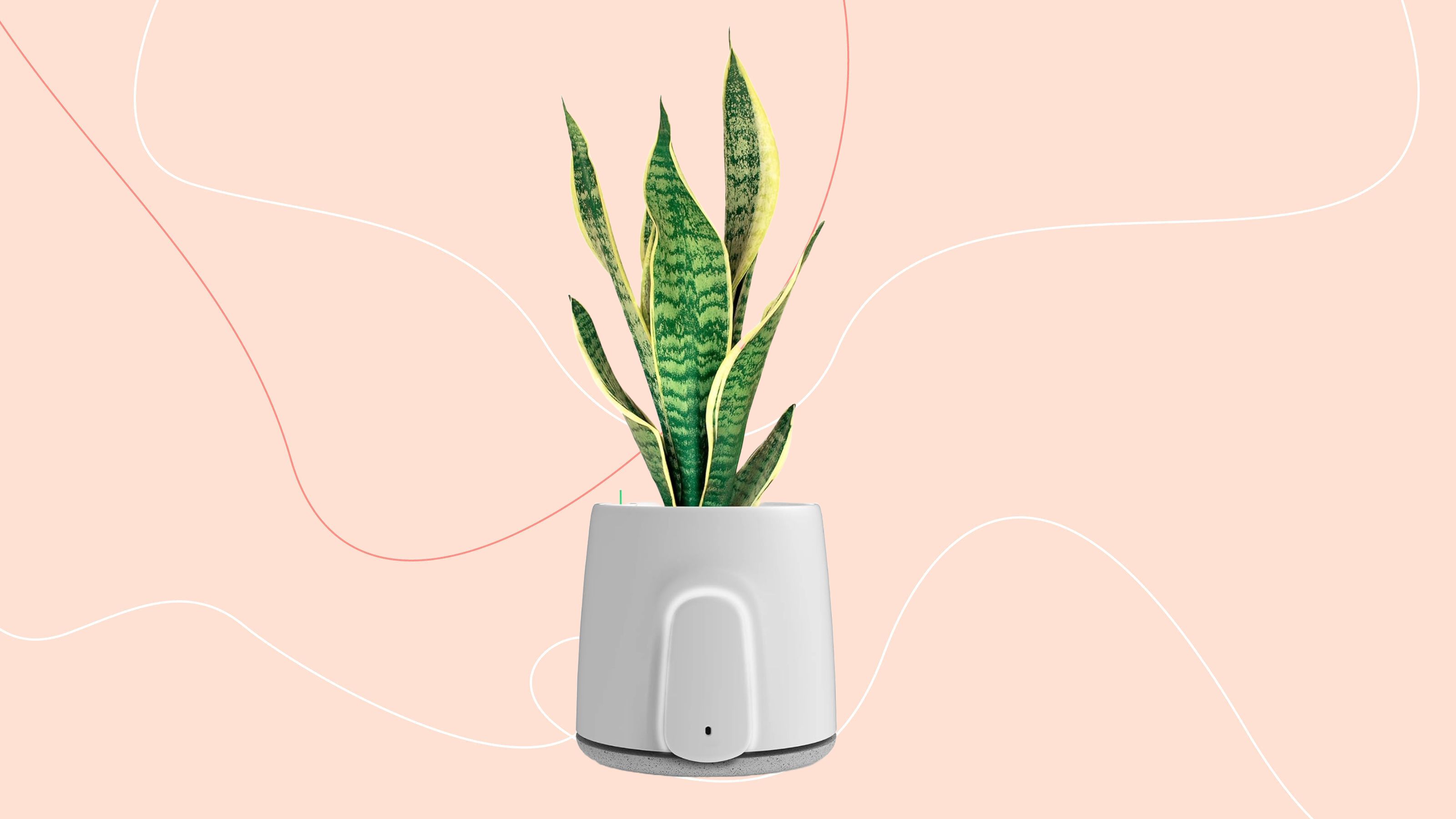
I was thoroughly impressed with how reactive and sensitive the Vitesy Natede Smart Air Purifier was during testing. Using a combination of plants’ natural filtering and a ceramic filter, the Natede Smart cleaned loads of “nasties” out of the air super speedily. And I loved that it gave me data to back it up, too.
-
+
Stylish enough to display
-
+
Sensitive, real-time updates
-
+
Monitors temperature, humidity, VOC, CO2 and fine particles
-
+
Almost silent
-
+
Compatible with Alexa and Google Assistant
-
-
Bit of a faff to set up
-
-
Takes up a fair bit of shelf space
Why you can trust Ideal Home

I’ve always wanted to invest in an air purifier, but have put it off until now – and after testing the Vitesy Natede Smart Air Purifier, I regret not buying an air purifier before.
For the most part, I wanted one of the best air purifiers because I live next to a busy road with idling traffic, and one of my children has allergies. This Vitesy air purifier – which is also a plant pot – helped me pinpoint issues with my air quality, delivering rich data directly to my phone.
In a nutshell
The Vitesy Natede Smart is an air purifier and plant pot in one. It uses a plant’s natural abilities to metabolise pollutants alongside a ceramic filter to eradicate an impressive range of particles and chemicals from the air.
The Natede Smart also delivers real-time, rich data to an app on your phone, letting you know what’s going on with the air around you. You can track this via the graphs it creates over the day, week and month to get a really good picture of the air quality in your home.
I was impressed with how sensitive the Natede Smart was, picking up issues with the air in seconds and then processing them to restore air quality quickly. I also really liked that it’s low maintenance – the filter just needs rinsing every two months and replacing every six years to keep it working at its best.
Vitesy Natede Smart Air Purifier specs
- Recommended room size: Up to 20 m²
- Air change per hour: 4.4
- Noise levels: 26-52 dB
- Filter type: Ceramic filter treated with WO3
- Dimensions: 252x264x271mm
- Weight: 2.5kg + plant and water
- Wattage: 18W
- Smart app connectivity: Yes
- Timer: Yes
- Auto mode: Yes
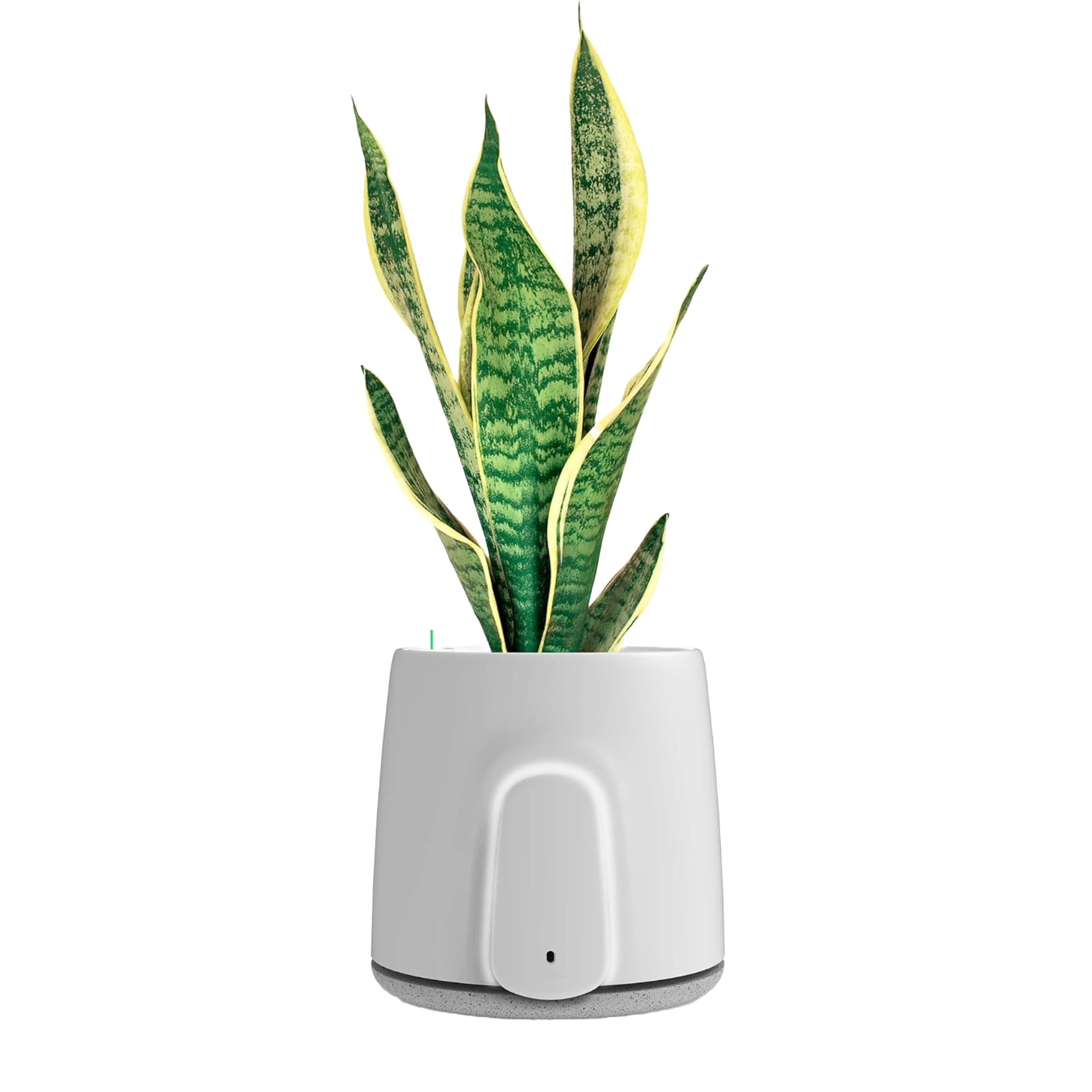
How I tested

Zoë is an experienced product reviewer and prides herself on meticulously putting products through their paces during testing. In this case, this meant operating the air purifier for four weeks in a very busy house where lots of people walk past the device often. She also spent a long time fixated on the stats and user experience of the app, making sure it was just the right level of helpful, and a bit geeky without being intimidating for the average user.
Unboxing and setting up
The Vitesy Natede came in a neat square box that wasn’t very heavy at all. It probably weighed under 3kg all in. I was pleased to see that most of the packaging was recyclable – it was mostly packaged in undyed cardboard, with one plastic bag that contained the filter, and one plastic bag that contained the expanded clay beads for potting.
Putting the Vitesy Natede together took me quite a while, because I realised I needed to get plant compost and a suitable plant to pot inside the air purifier. No, sadly, it doesn't come with the plant.
Sign up to our newsletter for style inspiration, real homes, project and garden advice and shopping know-how
However, there is a list of plants Vitesy recommends for the purifier, based on the fact that they’re good air purifiers themselves. You can take a survey on the app to find one that’s compatible with your lifestyle (eg, pet safe, how much light it needs, etc), or you can browse their list.
It includes: dracaena (snake plant), chamaedorea (bamboo palm), phoenix (pygmy date palm), spathiphyllum (peace lily), nephrolepis (queen fern), anthurium (tailflower), epipremnum (Ivy Arum), aglaonema (Chinese forever green), Ficus (weeping fig), chlorophytum (spider plant), and aloe.
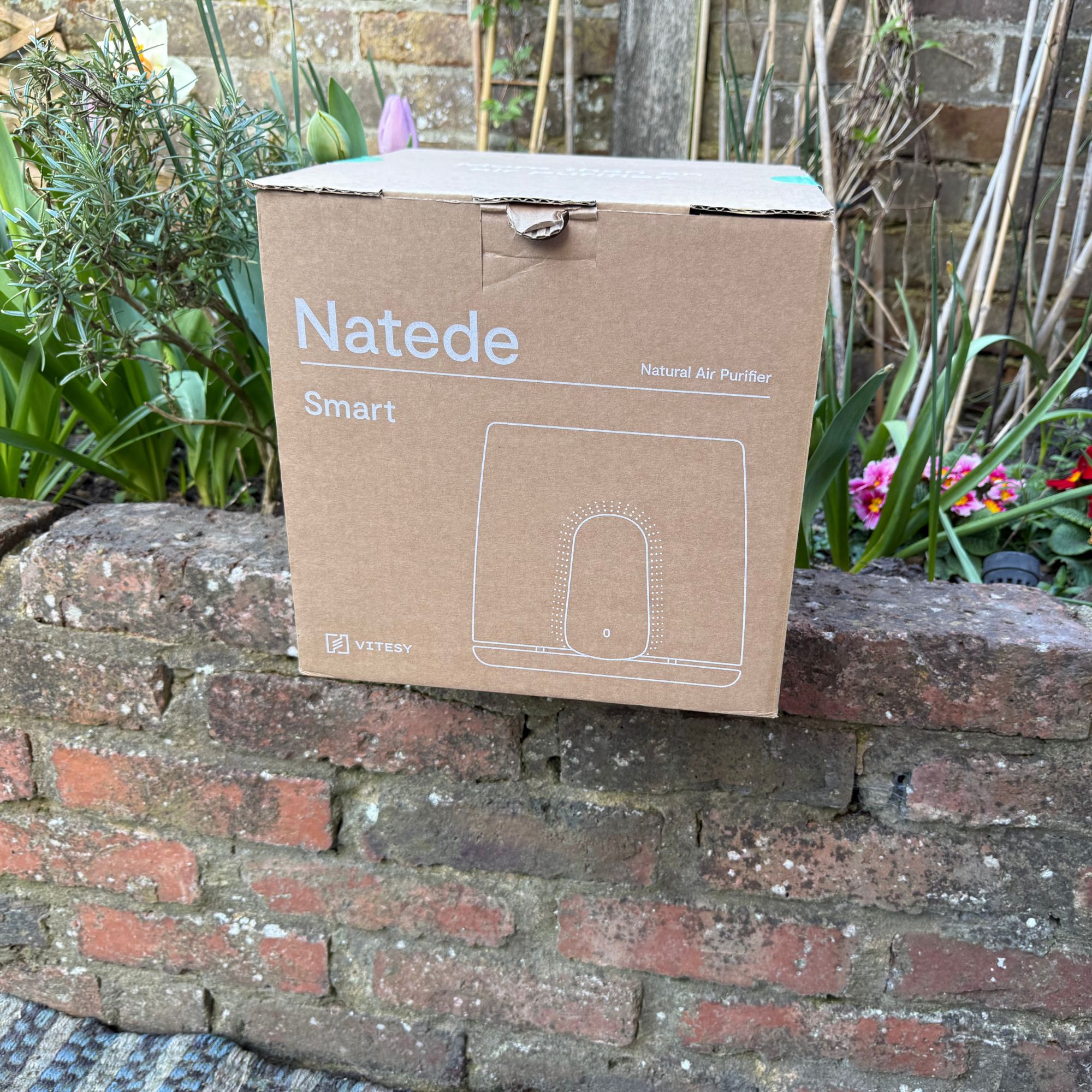


I opened for chlorophytum, and the app told me this plant is effective against formaldehyde, xylene, and toluene, which I thought sounded good, as I like to burn candles (petroleum-based wax emits xylene and toluene).
With the plant successfully purchased, I then potted it all up and used the expanded clay beads around the sides of the plant and across the top. There’s also a cage for you to plant your plant in, which is concealed once you’ve potted it up.
I then topped up the onboard tank with water and quickly realised I hadn’t put the tank on the bottom of the purifier, so water poured everywhere. But after a very messy situation involving soil, clay dust and water, my Vitesy Natede Smart air purifier was ready.
On the app, I was able to set where in the house my Natede was located, and give the device a name as well as set a goal. You can opt for general improvement, allergy, baby, productivity and sleep. I went for general.
Design
Initially, I was impressed with how small the Vitesy Natede is, as air purifiers I’d tested before have been much bigger. But then I realised it’s meant to be a plant pot too, and sit on your shelf (or I suppose on the floor if you wanted). And it’s actually quite big to sit on any shelf, and it didn’t fit on any of my bookcases.
Because it requires mains electricity, you’re also limited to where you can really put it, unlike a normal plant pot. I settled for my sideboard, which has some daylight but isn’t in direct light. It looks fine there, and when guests came over and I pointed it out, they couldn’t believe it was an air purifier, so perhaps I was being too harsh.
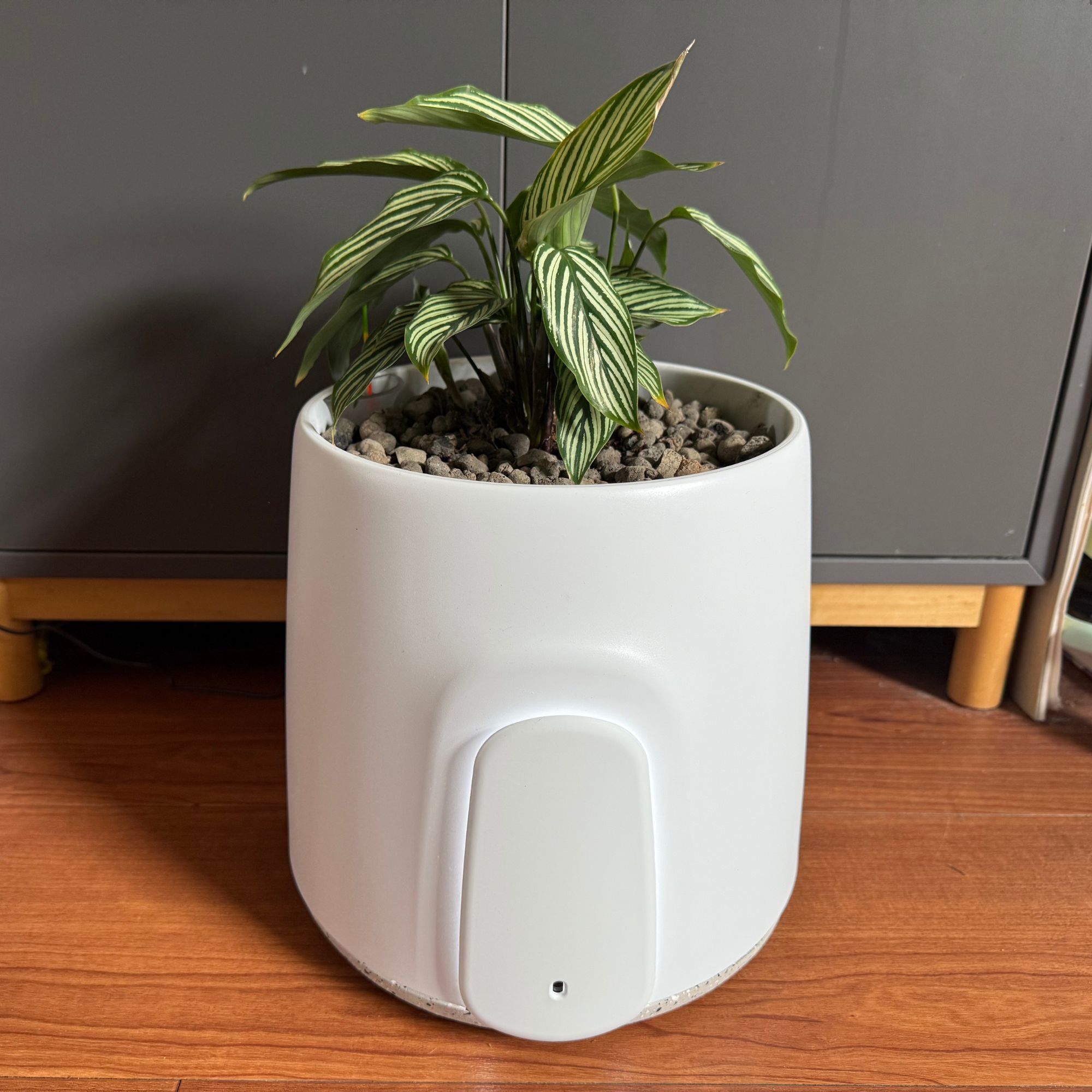
I would say it’s not designed to be moved around, though. This is because you fill the tank with water, and as I found during testing, moving it around slops water out of the bottom. It’s also fairly cumbersome to carry, especially once it’s loaded with water, and it becomes fairly heavy.
However, one major plus is that there is a dipstick float to let you know the water levels in the tank (which gradually waters your plant). It’s on the side, and brightly coloured – again, no one else noticed this other than me, so we can conclude I am very fussy. It was useful to have this dipstick as it quickly made me realise how thirsty all my house plants must be.
Performance
The Natede Smart sounds very impressive - combining nature and technology to deliver fresh air in your home. It claims to remove viruses, bacteria, fungi, fine dust, VOCs and odours from indoor air.
Vitesy says the Natede Smart uses high-quality sensors to monitor these elements, then the “photocatalytic technology” eradicates them alongside the phytoremediation from the plants (this is the plant’s ability to metabolise inorganic and organic contaminants, reducing the concentration or toxicity of pollutants). The Natede Smart makes use of a ceramic filter rather than a HEPA one, and it doesn’t require replacing; you can just wash it under clean running water every two months.
That all sounds very impressive – and scientific. But does it actually work? Here at Ideal Home, we have a very strict formula for how we measure the performance of air purifiers. This entails introducing elements into the environment around the air purifier and seeing how the air purifier reacts. The first test is a smoke test.
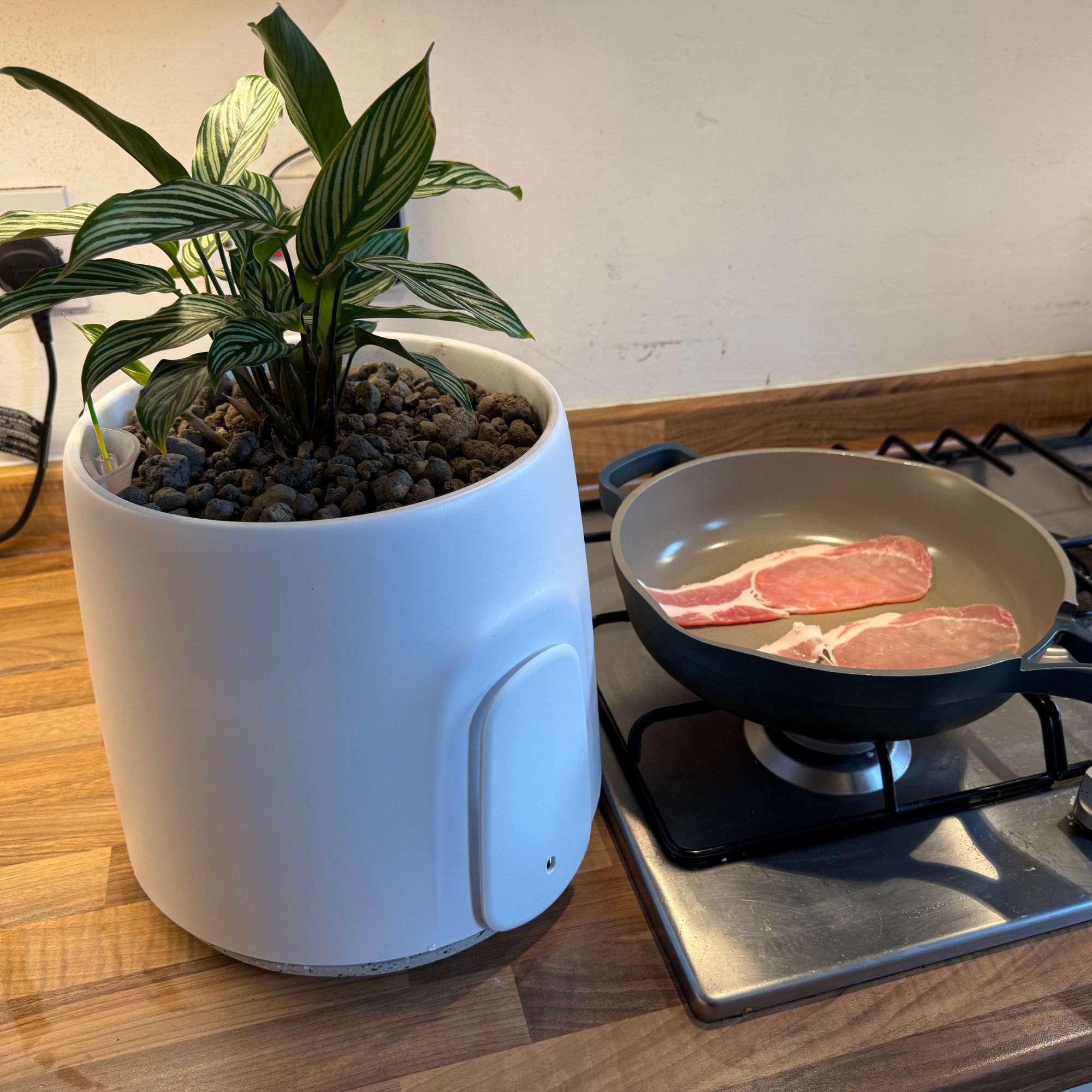
So, I lit a match in front of the Natede Smart and let it burn out, measuring how quickly the app registered the smoke and then how quickly the air returned to better quality according to Vitesy’s app. I was impressed – it took just seven seconds for the Natede Smart to register the smoke and 30 seconds to return the air quality to “perfect”. Big tick here.
Then I sprayed an aerosol deodorant in front of the Natede Smart. This was even better, with the app displaying poor air quality just four seconds after I sprayed it. It did take 40 seconds for CO2 to return to perfect, and 44 seconds for the VOCs to return to normal.
For my fine particles test, I emptied the dust box of my vacuum out in front of the air purifier, as this typically creates a lot of dust in the home. It took just 3 seconds for the Natede Smart to register the fine particles in the air and 20 seconds for it to return the air quality to perfect. I was incredibly impressed with these stats.
Then, I moved on to the bacon test. I fried two rashers of bacon next to the Natede Smart using a gas hob. Within 2 seconds, the Natede Smart raised the alarm that there was CO2 in the air, and 5 seconds for VOC and fine particles. It was quite a heady cocktail for the Natede Smart, and after I finished cooking, it took 8 minutes to return to “Good” air quality readings.
Ease of use
I found the Natede Smart air purifier really easy to use. Initially, I set up the app to alert me every time the air quality dropped, but it actually gave me slight anxiety as it was constantly pinging. The sensors in the Natede Smart are highly sensitive, and every time someone sat at our dining table (which the Natede Smart was positioned near), it’d set off an alert.
So, I switched the alerts to once daily – and it told me every day that my house had too many fine particles. Of course, I also wish it told me how to reduce this other than using the air purifier (before you suggest it, cleaning and dusting didn’t seem to cut the mustard).
The Natede Smart also stores all of your data, so you can see how levels in air quality fluctuate through the day, week and month. Again, this is both impressive and alarming – it seems the CO2 in my house shoots up at 6 am when heavy traffic starts outside my house. It also increases if anyone is sitting at the dining table, and when all five family members were sitting having a meal together, it really showed a spike in levels.
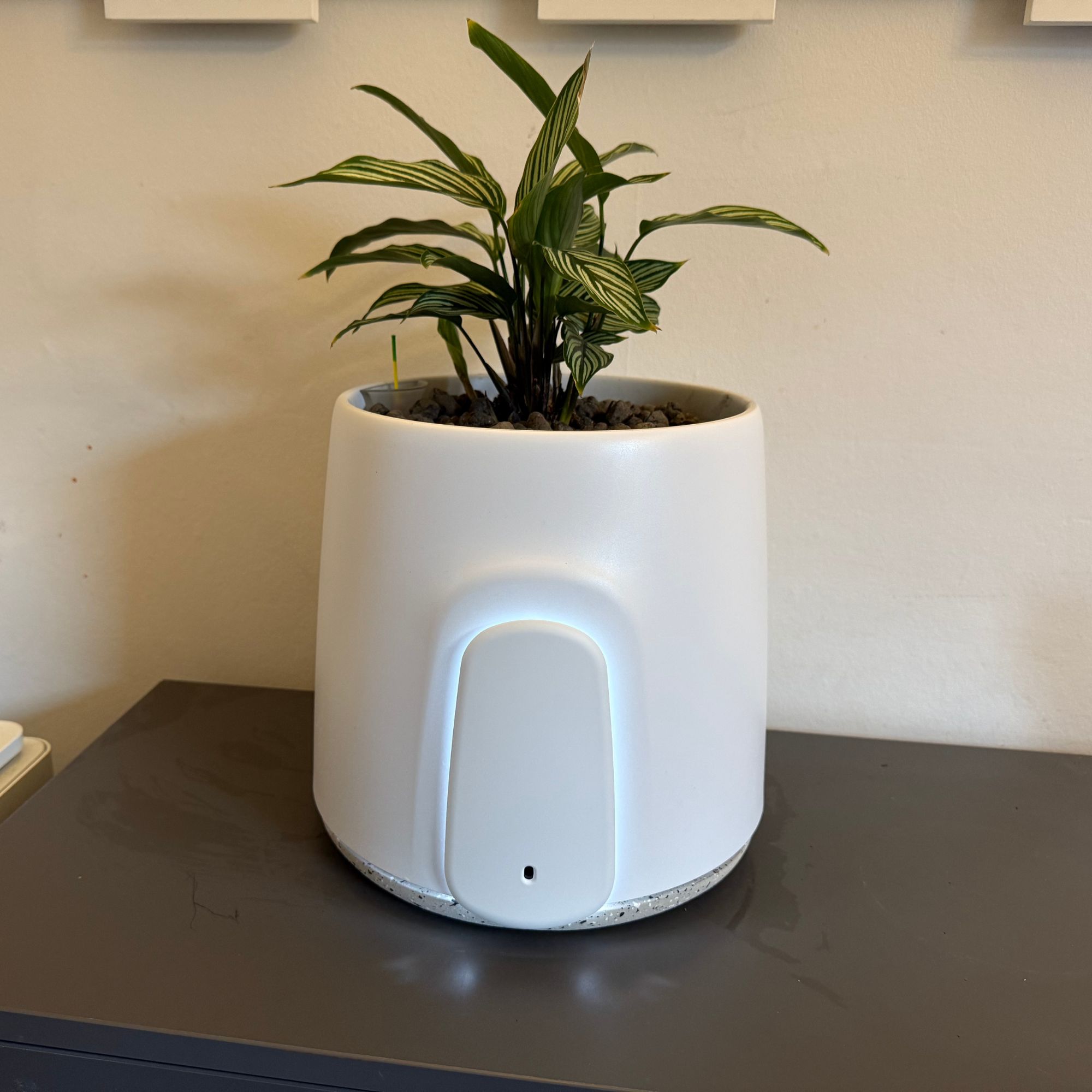
I appreciated the warning on the dipstick telling me when to water the plant, but I was surprised how quickly the water ran out. I topped it up every other day, and since then, all of my house plants have seen the benefit of this new routine, as I guiltily water them at the same time while realising how much I’d previously neglected them.
There’s a gesture sensor on the front of the Natede Smart, too. Simply wave your hand in front of it, and it changes the mode. I personally didn’t love this feature, as I like to be in control, and you can’t tell which mode it's on without going into the app. And my pesky children liked to switch the modes via the gesture mode without telling me, too, leading the Natede Smart to not be in the mode I wanted it to be in.
This is useful, though, if you want to control the air purifier but don’t have the linked app on your phone – for example, my husband could operate it this way.
I also set up my Alexa to be linked with the Natede Smart. This was so simple to do (some devices I’ve found the process a real headache). I struggle to see much benefit to doing this, though, as Alexa just pulls in the data as my Vitesy app does, and I get more detail from the Vitesy app.
Noise levels
No visitor noticed the Vitesy Natede was there – even when they were sitting by it. It’s incredibly quiet. Vitesy say the Natede Smart is between 26-52 dB – the upper limit of this seems quite loud to me. I never noticed the sound of the Natede Smart other than when I was consciously operating it. I’d definitely be able to sleep with it on (although it does emit a light at the front, which might be annoying – you can switch this off in the custom mode).
So, I used a decibel meter to double-check these claims on each mode. On silent mode, it was 30dB – this is the level of a quiet whisper or a library. On auto mode and performance mode it was 49dB, which is similar to soft music or the quiet hum of a fridge.
Portability
While the Vitesy Natede Smart is relatively small, I wouldn’t suggest regularly moving it about. It doesn’t have a handle, and when the water tank is full, it’s quite heavy for its size. And the water slops out very easily, making it a messy affair.
Energy use
The Vitesy Natede uses 18W during operation. This is similar to an LED light bulb or a USB charger, which seems pretty efficient to me. There is an auto mode, enabling it to only fire up when it's needed rather than constantly running, and you can turn off the LED light in the custom mode too. Every little helps.
Filter replacement
The filter in the Vitesy Natede is a WO3 PCO filter with photocatalytic oxidation. It looks like a ceramic honeycomb/sponge disc. To clean this, you only need to run it under water. Vitesy recommends washing it every two months and replacing it every six years.
At the moment, you can only buy the filter via Vitesy’s customer service by contacting them, but they do have plans to stock it on their website in future. As you won’t need to replace the filter for six years, you have time to figure it out.
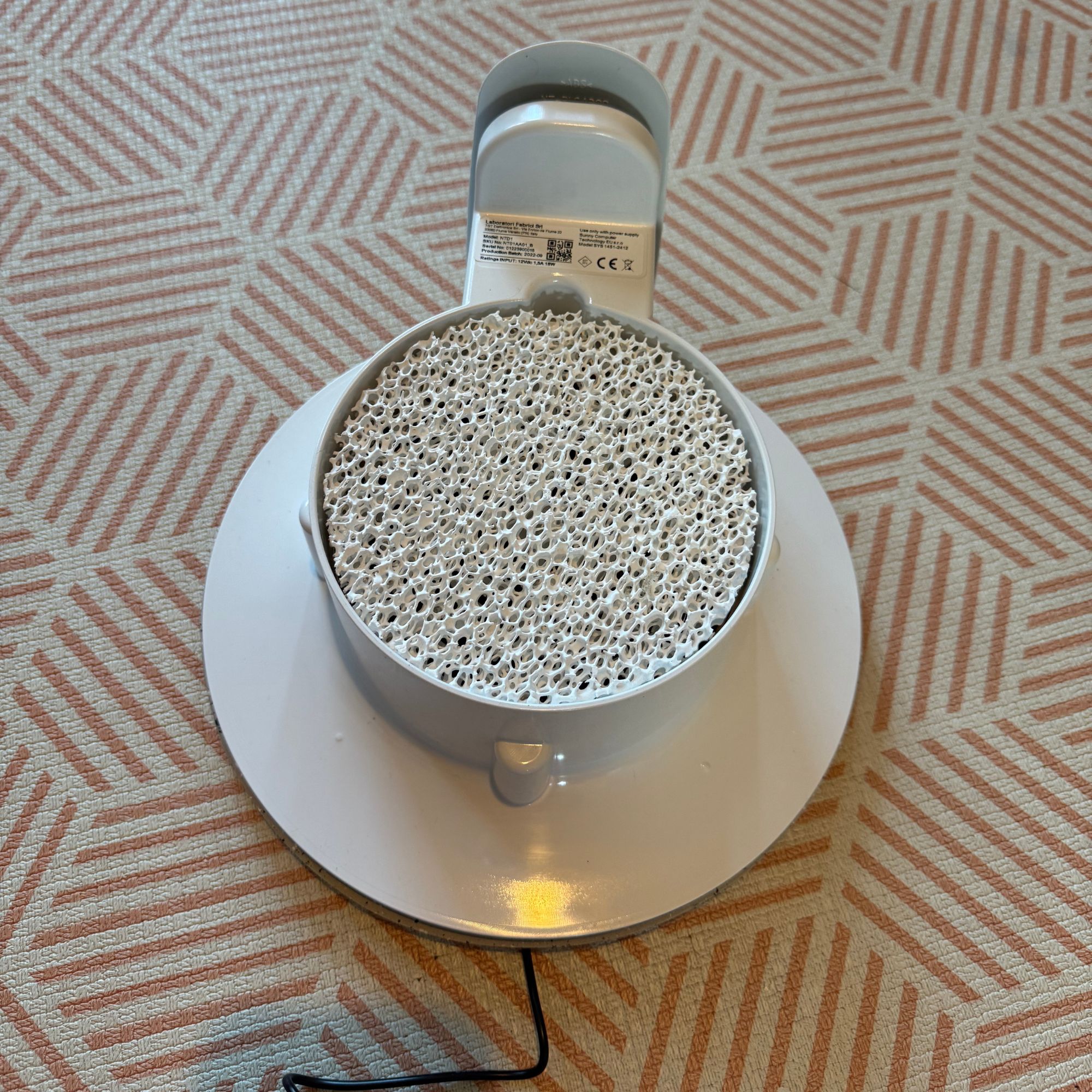
How does it rate online?
Users online love the smart features on the Natede Smart, finding peace of mind in seeing all the graphs showing how much it's improving their air quality. Someone using it for mould growth was able to put it in a damp corner and watch their air quality improve dramatically. Pet owners noticed how speedily the Natede Smart was when their furry friends walked past it – immediately recognising the change in the air.
There’s also praise for how easy it is to use, although one user said they’d have liked a remote to change modes alongside the app. Many people love that you don’t have to replace the filter, bringing that cost to almost nothing.

How does it compare to similar models and its predecessors?
Vitesy makes a Natede Basic and a Natede Smart. The difference being that the standard Natede doesn’t link to an app or a smart assistant. It also doesn’t have air quality sensors. This means you have to trust its working based on it whirring away. You can change the modes, but you wouldn’t be able to tell it what plant is in it, nor select different goals like you can on the Natede Smart. It is £30 cheaper than the Natede Smart, but I reckon that extra £30 is well worth it.
Looking at other purifiers for small spaces, we rated the Levoit Core 300S Air Purifier best for small spaces in our air purifier round up. While the Natede Smart covers 20m2 the Levoit counterpart does more than double that at 50m2, and it does have a connected app where you can monitor air quality and performance. However, it doesn’t look as pretty - it’s clearly a bulky white appliance rather than a turbo plant pot. The Levoit did struggle to pick up dust and fine particles in our testing, so the Natede Smart wins out here.
Should you buy the Vitesy Natede Smart?
I would recommend buying the Vitesy Natede if you want to actively see your air being cleaned, and also pinpoint any issues that might be affecting your air quality.
The Natede Smart is best used in small spaces – an office or medium-sized bedroom would be the ideal setting for it. It’s also great for those who are sensitive to noise distractions or want to run it while they’re sleeping, as it is so quiet when it’s operating.

Zoe is a freelance journalist and content strategist. Her career has traversed kids' publishing, women's lifestyle magazines, luxury property and content marketing. She's worked for the BBC, STYLIST, Marie Claire, heat, Wallpaper*, InStyle, The Sunday Times Style, Ocado, Christie's and more. She now regularly writes about interiors and sleep for a range of media – what she doesn't know about mattresses isn't worth knowing.